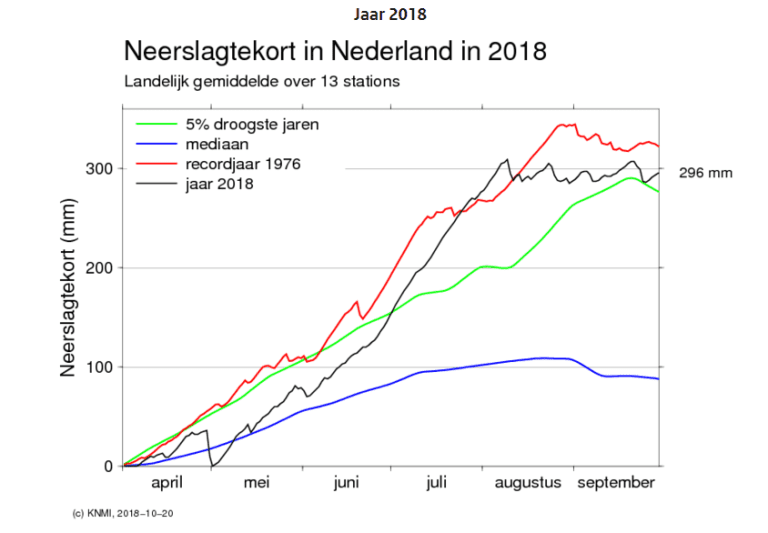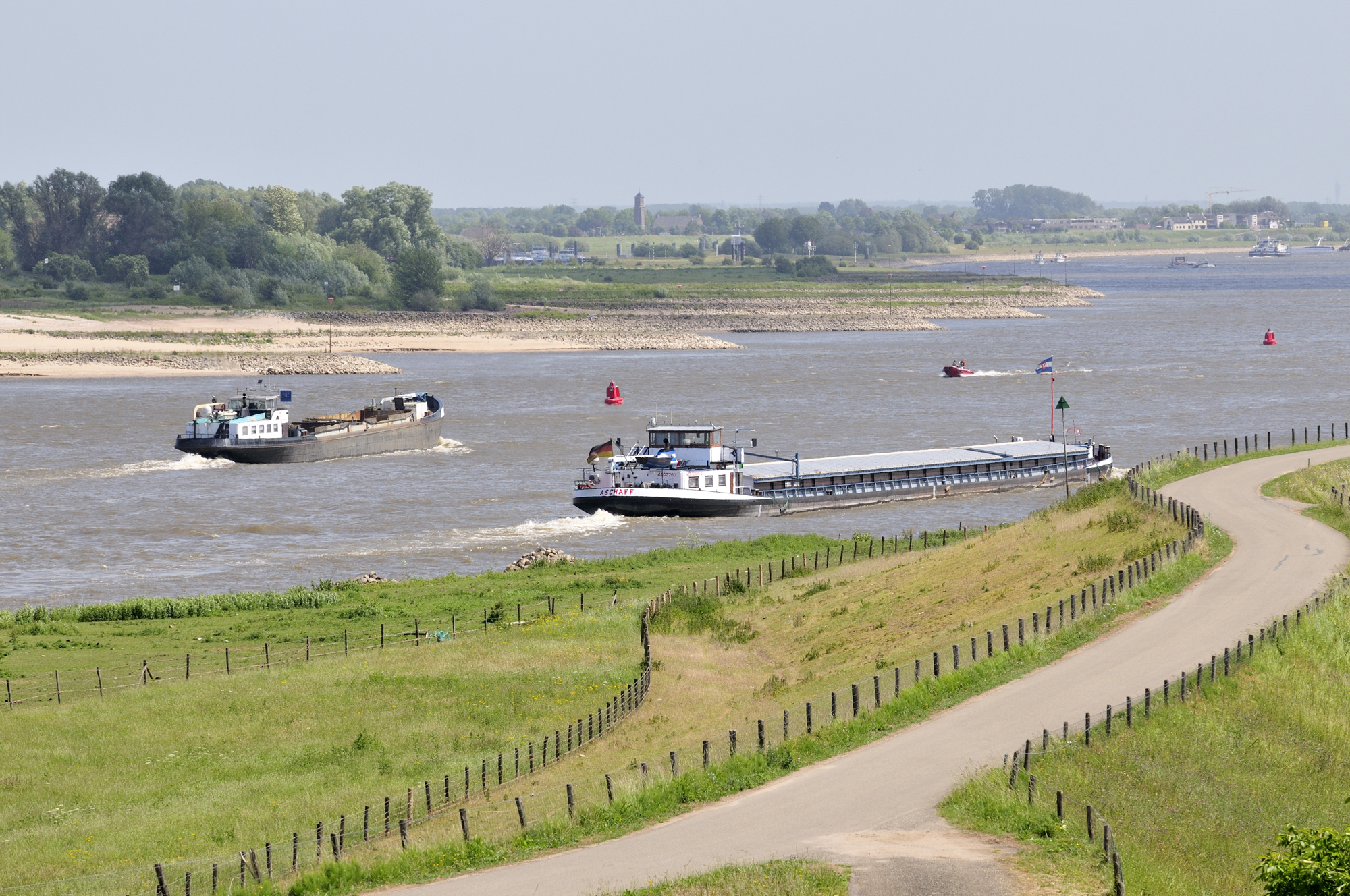Dry summers are no longer incidental, but a pattern. TU Delft researchers are working on solutions for the increasingly acute drought. A dossier with six parts.
Barges at low tide on the Waal River. (Photo: Image bank Rijkswaterstaat / Martin van Lokven)
Of the past five summers, four were too dry. The year 2018 was the driest with a precipitation deficit of 300 millimetres. The precipitation deficit is the shortfall between the amount of precipitation and the amount of evaporation. Normally, around August, the deficit is 100 millimetres, and in the autumn it drops to zero again. But not in recent years: 2019: 160 millimetres deficit, 2020: 209 millimetres deficit, last year: only 70 millimetres deficit. But in 2022, the deficit already stands at 300 millimetres – as much as in the record year of 2018. A good occasion to touch on various aspects of drought, as was done last summer in the Delft Outlook alumni magazine.


Precipitation deficit in The Netherlands in 2018
Climate forecast
Climate simulations by the Royal Netherlands Meteorological Institute (KNMI) show that in the coming decades it will become drier in Southern Europe and wetter in Northern Europe. So much is certain. The Netherlands is just on the border. It could tip in either direction. But the research, like the weather pattern, points slightly more in the direction of drought. Delta listed the consequences and expectations of increasing desiccation in And now for the weather forecast: more sunshine and evaporation.
Different types of drought
Drought comes in different flavours. A lack of precipitation is the primary cause that, over time, can lead to soil drying out and damage to crops and nature. The next stage is the depletion of ground and surface water, also called hydrological drought. It can cause damage to nature and infrastructure. Think of ground subsidence that may cause gas pipelines to collapse. This is the prelude to the next phase: the socio-economic drought that manifests itself in all kinds of human discomfort and economic damage. Because precipitation deficit does not take these differences into account, hydrologists are working on a new, universal drought index: SPI. Read about it in The best way to measure drought.
Urban problems
Vegetation and water buffers can reduce the impact of drought and heat in cities. TU Delft researchers are working on optimising this. Others are mapping the damage that drought causes to buildings’ foundations. Read and watch four examples in Drought in the city.
Soil subsidence
Soil subsidence in peat meadow areas is between 0 and 2 centimetres per year and has been going on for about 800 years, explains Professor Ramon Hanssen. But persistent drought lowers the groundwater level and exposes a thicker layer of soil to desiccation and shrinkage. Read how the drought of recent summers has increased the conflict of interests between nature and agriculture in: Will cows still be able to graze outdoors?.
Vision
We have learned to deal with flooding in the built environment, says hydrologist Dr Frans van de Ven (Faculty of CEG and Deltares), but we have less experience with drought. The effects of drought on subsidence, water quality and foundations only came to light years later. There are still plenty of research questions, the hydrologist says in View of Frans van de Ven.
- As of 2022, Delft Outlook is being replaced by the magazine Delft Matters.
Do you have a question or comment about this article?
j.w.wassink@tudelft.nl


Comments are closed.